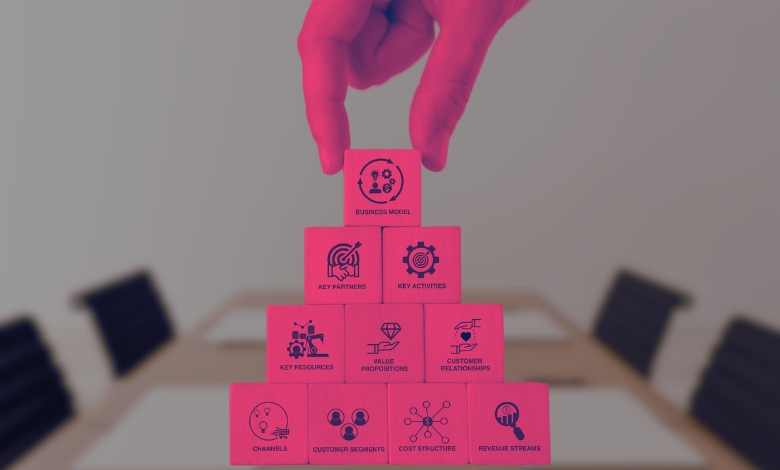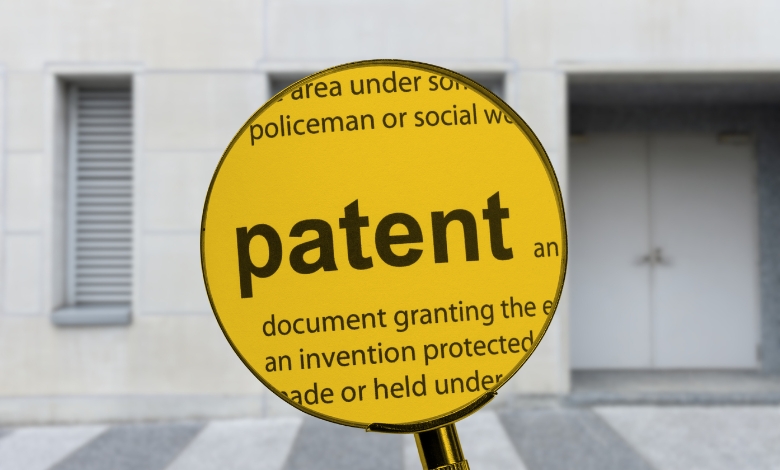What is the Buy Now Pay Later Business Model? If you’re into startups, we’ve laid out the whole idea for you to check out.
Shop without paying upfront? Sounds ideal, doesn’t it? The Buy Now Pay Later model allows that. BNPL revolutionized online purchases. It lets shoppers spread payments over time, instead of paying all at once. But how exactly does this innovative method work? And what impacts could it have on your finances?
This blog explores BNPL’s intricacies. We’ll cover key insights and industry trends shaping the sector. You’ll learn about various BNPL models, weighing pros and cons. Whether you’re a savvy shopper seeking convenience or curious about the future of online payments, this blog equips you with knowledge to navigate BNPL services efficiently.
So, let’s dive right in.
Article Breakdown
What is Buy Now Pay Later?
Buy Now Pay Later (BNPL) is a business model that disrupted retail and finance. It transformed how consumers make purchases and manage money. This innovative option lets shoppers split payments interest-free into installments, offering flexibility and convenience.
With digital platforms rising and demand for seamless shopping growing, BNPL gained global popularity. It revolutionized the traditional credit card model, providing an alternative financing solution. People can avoid accumulating credit card debt this way.
But, you must think carefully about Buy now, pay later (BNPL) business model. There are possible issues: late fees, high interest rates, and impacts on your credit score. Evaluate these concerns before choosing BNPL.
Different BNPL Business Approaches

Buy now, pay later has grown rapidly, giving shoppers flexible payments while shaking up retail and finance. Within BNPL, five distinct business models exist, each with unique traits and advantages. Understanding these models reveals insights into this industry’s inner workings.
1. The Merchant Funds Model:
Here, the BNPL provides partners directly with retailers. When you select BNPL at checkout, the retailer pays for your purchase upfront. Then, you repay the retailer over time, in installments. Retailers offer flexible payments this way, without outside lenders involved. It encourages customer loyalty too, as retailers gain more sales and satisfied customers.
2. The Lender Funds Model:
Unlike merchant funding, the lender model involves BNPL providers partnering with external financial institutions or lenders. At checkout with BNPL, the lender covers your purchase cost upfront. You then repay the lender gradually, in installments over time. This model provides diverse financing options for shoppers. And BNPL companies can focus on customer experience and growth, rather than managing credit risk themselves.
3. The Hybrid Model:
The BNPL hybrid model fuses merchant-funded and lender-funded aspects. Providers ally with retailers and lenders, giving customers financing choice flexibility – merchant or lender options. This balances retailer financing control with a variety of customer payment option variety.
4. The Direct-to-Consumer Model:
BNPL providers directly extend credit to customers in this model, conducting soft credit checks. Determining eligibility for flexible payment plans themselve. No external lender or retailer middlemen streamlines the customer journey. But providers shoulder full credit risk.
5. The Peer-to-Peer Model:
Decentralized BNPL connects individuals willing to finance purchases with those needing funds. Online platforms facilitate these borrower-lender matches, based on mutual criteria preferences. A sharing economy approach gives customers an alternative flexible financing avenue.
How Buy Now Pay Later Works
Buy Now Pay Later, known as BNPL, enables customers to purchase items and split payments over time. This payment method allows consumers flexibility, dividing costs into installments without interest or fees. Let’s explore how BNPL functions, along with benefits and risks for consumers and merchants.
Making Purchases with BNPL
When using a BNPL service during checkout, customers create an account with the provider, sharing basic details. Upon approval, they select BNPL as their payment option. Customers can then split the purchase into manageable installments. The number of installments and payment frequency varies based on the specific BNPL service agreement. Some offer short-term plans, like four equal parts, while others allow longer-term options.
After checkout, consumers receive a payment schedule detailing installment amounts and due dates. Typically, the first installment is due at purchase, with subsequent payments automatically charged based on the agreed-upon timeline. Customers can monitor their account and payment history through the BNPL provider’s website or mobile app.
Benefits for Consumers
A key advantage of Buy Now Pay Later Business Model BNPL for consumers is the ability to buy without paying the full amount upfront, providing financial flexibility, especially for larger purchases. Additionally, many BNPL services are interest-free, allowing consumers to budget payments without accruing extra costs. This can be particularly helpful for managing expenses or making purchases that may not fit within a consumer’s current budget.
Besides, BNPL makes an easy option over normal credit cards. You don’t need good credit or any credit history. This opens it up for loads of people without an established record. Also, BNPL usually works super smoothly online, blending nicely with e-commerce sites.
Risks for Consumers and Merchants
While useful, consumers must know BNPL’s potential downsides. Missed payments bring fees and penalties hurting your credit rating. Carefully review if you can pay on time. Avoid piling on too much debt.
For merchants, BNPL could mean delayed or skipped payments from buyers. Yet, offering this attracts more shoppers spending more per order, making it worthwhile for many companies.
The Upsides of Buy Now Pay Later
1. It’s Super Easy
Buy Now Pay Later (BNPL) is incredibly handy. You can get stuff immediately without coughing up the full cash. Perfect when your wallet is light or you’re splurging big.
2. Zero or Low Interest Rates
Many BNPL companies offer interest-free payment plans. So you avoid those pesky interest charges on credit cards. Pay on time and it’s a money-saver!
3. Applying is a Breeze
Getting to the BNPL is quick and simple. Minimal paperwork, instant decisions. Great for those seeking credit access pronto.
4. Budgeting Becomes Easier
Splitting costs into smaller installments makes budgeting way simpler. No more stressing over huge one-time payments.
The Downsides of Buy Now Pay Later
1. Late Payment Penalties
Miss a BNPL payment and you’ll likely face late fees or penalties. Read the fine print carefully to avoid extra charges.
2. Credit Score Impact
When utilizing buy now, pay later (BNPL) services, it’s crucial to remember that missing payments can negatively affect your credit score. So, keep track of due dates and maintain a good payment history to safeguard your creditworthiness.
3. Temptation to Overspend
BNPL’s convenience can sometimes lead to impulsive purchases. However, exercising self-control and only using BNPL within your budget is vital.
4. Limited Merchant Acceptance
Despite BNPL’s growing popularity, not every retailer accepts this payment method. You may encounter situations where your preferred stores don’t offer BNPL, limiting your ability to use it.
Cross-Country Analysis of the BNPL Market
The buy now, pay later (BNPL) industry has experienced significant growth worldwide. To better understand global BNPL trends and user characteristics, the Bank for International Settlements (BIS) conducted a comprehensive cross-country analysis, providing valuable insights into the current state and potential future developments of this market.
Market Trends
BIS research reveals several noteworthy BNPL market trends across countries. One key finding is the remarkable increase in BNPL usage among younger consumers, who strongly prefer flexible payment options and greater financial control.
A notable trend is BNPL services spreading across sectors like retail, e-commerce, and travel. BNPL’s growth comes from allowing consumers to buy things and pay in installments without needing a credit card. As digital platforms and online shopping grow, BNPL offers a convenient alternative payment method.
User Characteristics
The analysis shows BNPL attracts diverse customers, from young adults to middle-aged. This indicates BNPL’s appeal isn’t limited to one age group but spans demographics. The research also suggests BNPL gains traction with varying financial backgrounds. While some use it due to budget constraints, others find it a convenient, interest-free installment option. This versatility sets BNPL apart from traditional credit cards.
Impact on Financial Behavior
The cross-country analysis examines how BNPL impacts consumer financial behavior. It reveals BNPL usage influences spending patterns, with users tending to make larger purchases. Installment-based payments encourage customers to consider higher-priced items, increasing the average order value.
BNPL services have pros and cons. Late fees and high interest can be issues. Users must think carefully about paying on time to avoid extra costs.
Regulatory Considerations
The BIS study shows the need for oversight in the fast-growing BNPL industry. As more people use it, policymakers look at ways to protect consumers and ensure fair business. Balance is key – allowing innovation but safeguarding rights.
Future Outlook
Experts predict continued growth for BNPL. More players means more competition, and possibly better deals for consumers. But regulation and the economy could change the landscape.
Emerging Trends in the BNPL Industry
BNPL expands beyond retail to travel, healthcare, education – giving flexibility for expenses. Partnerships with banks and credit cards offer seamless payment choices.
BNPL firms adjust technology for customizing customer experience. Providers analyze personal purchasing patterns. The goal is improving satisfaction through tailored payment terms.
While popular in the U.S. and Australia, BNPL has potential for wider global adoption. As more retailers offer it, expect increasing international use.
Regulatory Actions and Potential Challenges
Authorities monitor consumer protection as BNPL grows quickly. Regulations may address transparency, responsible lending, and dispute resolution.
With mainstream usage, responsible borrowing oversight becomes essential. Robust credit risk assessment by providers protects consumers and merchants from defaults.
Digital transaction growth prioritizes safeguarding personal and financial data privacy. BNPL companies must implement stringent security measures, guarding customer information.
4. Lots of competitors are entering the BNPL space. Big financial companies and startups are offering the “buy now, pay later” services. Too many players might force some smaller firms to partner up or leave. Market consolidation could occur.
In Summary
The Buy Now Pay Later Business Model (BNPL) payment option has transformed shopping and finance. It lets consumers purchase and pay over time flexibly, conveniently. Throughout this guide, we explored the different BNPL business models. We explained how it works and looked at the pros and cons.



